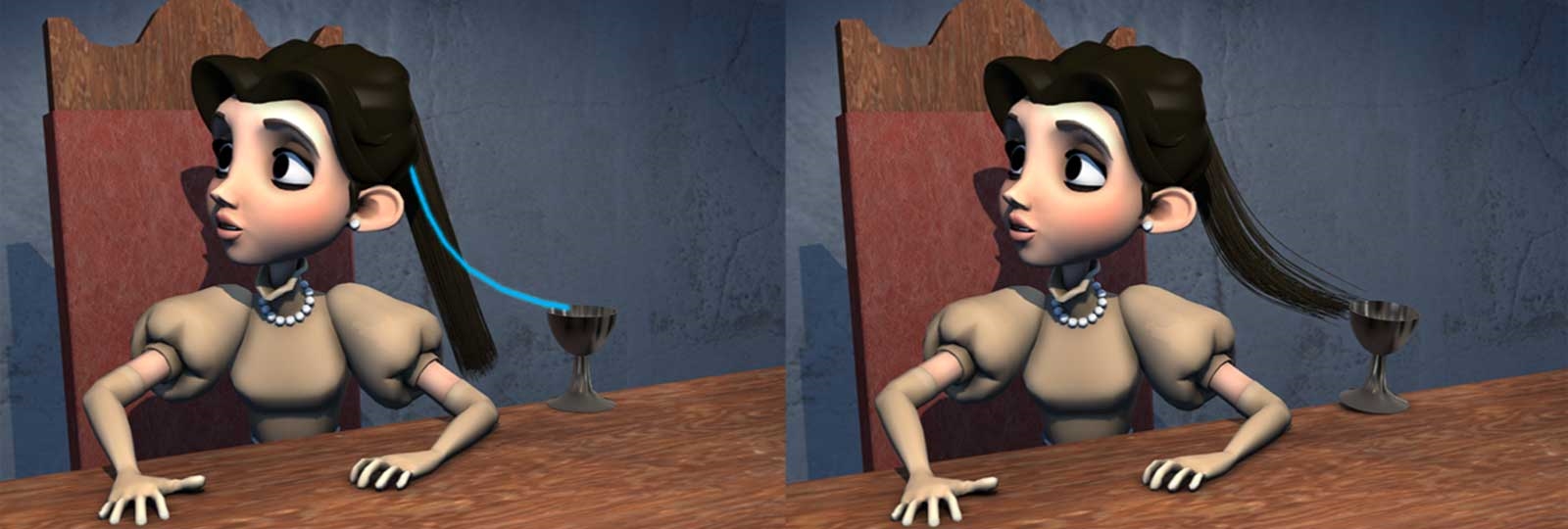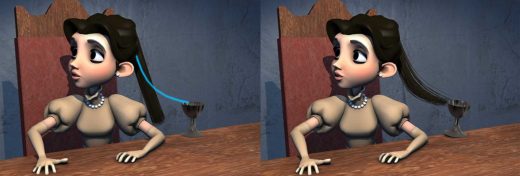Disney reduces the chances of CG hair disasters

Movie studios often want computer-generated hair to have a specific effect, whether it’s a seductive toss or a careless flick that knocks something over. But there’s a problem: most rough-cut simulations don’t realistically simulate hair, leading to a lot of guesswork and time-consuming edits. Disney (no stranger to hair-centric movies) has a solution, though. It developed a new system that can produce more authentic-looking simulations without an impractical boost to computation power. The trick, it turns out, was to use just a few cleverly controlled sample hairs.
The team first extracted central “guide” hairs to use for complex simulations, with the remaining “detail” hair following suit under one main rule: the centers of mass for each subset of detail hair had to maintain their positions relative to dynamic reference points on the guide hairs. Those realistically simulated guide hairs effectively “tug” the rest of the hair along, giving animators an idea as to whether a character’s hair fling will have the intended results.
This is more difficult than it might seem. Disney noted that it had to bend over backwards to prevent unusual behavior between the guide and detail hairs, and that the detail hairs tend to clump around the guide hairs. However, the creative appeal is obvious, and not just limited to Disney’s own productions. Animators might be more likely to include long, flowing hair knowing it’ll require less editing time. This could also be helpful for video games, where complex hair simulation might not be a realistic option in the first place — you could produce “close enough” hair that passes muster without bogging down frame rates.
(25)



